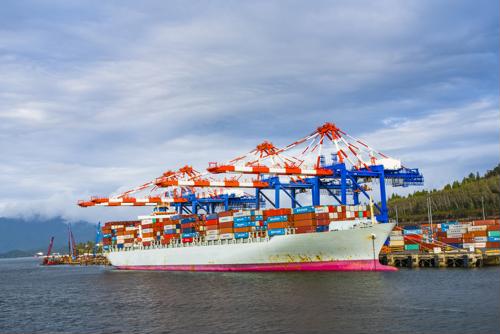
Smart ships
By Max BurkhalterApril 19, 2022
The internet of things (IoT) is enabling automation in a variety of industries, as machine learning and AI-powered technologies assist in the processes once delegated to human operators. One sector reaping the benefits of smart tech integration is the maritime industry.
Thanks to the ever-increasing possibility of reactive machinery, the possibility of fully-autonomous shipping vessels at sea is inching closer to reality.
Precious cargo
The shipping industry has long been cyber-dependent to assist in open-water operations. From navigation to communications, cargo transfers to systems monitoring, the nautical freight sector has taken advantage of the latest AI integrations.
However, projections detailed in the Global Maritime Technology Trends 2030 report outline the possibility of unprecedented IoT reliance: Fully automated freighters. The naval industry has long focused on improving safety outcomes by removing workers from dangerous and mundane jobs.
The shift towards autonomous, or 'stand-alone' systems, will see the implementation of interconnected intelligent programs to the level of complete computer-controlled vessels. While current advancements in marine tech allow for semi-autonomous navigation by removing engine-room and crew staff, the report estimates that by 2030, long-distance nautical hauling could be performed strictly by remote-control capabilities of smart tech.

Robot remote control
The integration of sensors and robotics technology to replace human operators is already underway. Frontiers in robotics and AI reports of studies detailing the potential of sailing robots for at-sea operations undertaking both long durations and extreme elements.
Prototypes have seen successful outcomes, with some autonomous sailing achieving long-term operation. Future deployment possibilities are being reviewed for energy efficiency and monitored for propulsion and steering precision. The integration of sufficient solar panels will be a key factor in ensuring these clean energy experiments have real-world viability.
Big data, big iceberg
One of the key considerations regarding the automation of cargo vessels is the vast amount of data needed in order to chart and execute a nautical operation. From world meteorological and oceanographic data, to traffic information and machinery performance diagnostics, the amount of analytics tasked to a conditioning monitoring system is gargantuan.
Big data involves the deployment of a large number of algorithms designed to capture correlation and interpret outcomes. This level of processing calls for 'dynamic learning,' or intuitive inter-systems communication using IoT infrastructure.
As maritime operations become fully automated, decisions as to where this big data is stored will have to be made. Processing advantages exist for on-ship servers, however oversight from land-based systems affords real-time human response outcomes.
Cognitive systems mimicking human data interpreters will adapt from a decision-tree-driven approach to the execution of a probabilistic approach. AI and machine learning performance monitoring, alert systems and situational awareness algorithms work together to essentially replace the need for sailors in the future.
For the latest in reliable tech applications for the bridge and open deck sensors, Perle is proud to offer maritime operators reliable equipment. From serial terminal servers to media converters, Perle has followed the guidelines necessary for both subsea and topside usage. To learn more about Perle's ventures in the maritime industry, please visit our Marine Solutions page.



